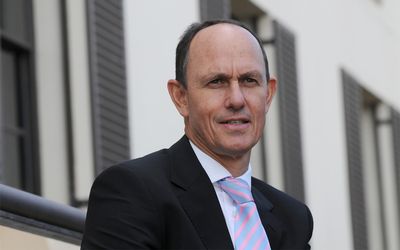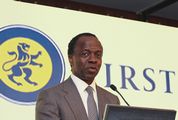INVESTMENT in local equities is expected to offer the best annual returns over the next decade — though more muted than the returns seen since the 1960s.
Local equities could yield a real return of about 3.8% a year over the next 10 years, said Alwyn van der Merwe, director of investments at Sanlam Private Investments on Tuesday. Equities would be the "best of a bad bunch" offering slightly higher returns than bonds, property and cash, he said.
He predicted that local government bonds will provide a real return of 2% a year for the next 10 years, cash will give no return in the long term, while property will offer an annual real return of 3.2% over the same period.
The more muted returns were realistic, given the very high past returns, said Mr van der Merwe.
"One of the reasons why the outlook is very pedestrian over the next 10 years is because we have had phenomenal returns over the past 10 years," he said.
Equities had given a return of 22% a year over the past 10 years to the end of June, while inflation was an average 5.4% a year, he said. Investors, therefore, earned real returns of 15% a year.
Though returns would be lower, Mr van der Merwe said there would be winners and losers within these asset classes, making the case for active asset management and stock picking. "The market will not go up in a steady fashion over the 10-year period … I would make a very strong case for active portfolio management over the next 10 years."
Mr van der Merwe said the real annual return for local equity in the 1960s was 11.9% and ranged from 6.5% in the 1970s to 10% in the 2000s and 8.8% from 2010 to now.
"Over the next 10 years, returns will be lower than any other period since the ’60s," he said.
This meant investors needed to lower their expectations, especially as many assets were trading on high valuations. From 1998, bonds had offered a 4%-a-year real return.
Equities had offered a real return of 15% a year from 2003.
It would be unrealistic to expect similar returns in future, said Mr van der Merwe.
Investors should rather make long-term investment decisions, without emotion, as markets are too uncertain in the short term to make sense of them, he said. As an example, he said equities grew 25% since May 2012, then corrected by more than 7% in March followed by a similar correction in June.
Long-bond yields also corrected aggressively in June over concern that the US Federal Reserve would begin tapering its quantitative easing programme.
Mr van der Merwe based his predictions on starting with the "known" — the current price of the asset.
"There is a clear historic relationship between price levels and future earnings."
He said when asset prices are high there is a high statistical probability that the longer-term returns will be below average, while when the price starting point is low, returns should be above average over 10 years.
Local equities represent a very diversified basket of shares — including industrials, resources and financial stocks. Industrial shares appear expensive relative to their long-term history while resource stocks are marginally expensive at the moment, said Mr van der Merwe.
Financial shares, on the other hand, look fairly valued. Banks were "cheap" partly because they were "tainted" by the risk of consumers under financial pressure and unsecured lending, he said.

Alwyn van der Merwe, director of investments at Sanlam Private Investments. Picture: FINANCIAL MAIL
INVESTMENT in local equities is expected to offer the best annual returns over the next decade — though more muted than the returns seen since the 1960s.
Local equities could yield a real return of about 3.8% a year over the next 10 years, said Alwyn van der Merwe, director of investments at Sanlam Private Investments on Tuesday. Equities would be the "best of a bad bunch" offering slightly higher returns than bonds, property and cash, he said.
He predicted that local government bonds will provide a real return of 2% a year for the next 10 years, cash will give no return in the long term, while property will offer an annual real return of 3.2% over the same period.
The more muted returns were realistic, given the very high past returns, said Mr van der Merwe.
"One of the reasons why the outlook is very pedestrian over the next 10 years is because we have had phenomenal returns over the past 10 years," he said.
Equities had given a return of 22% a year over the past 10 years to the end of June, while inflation was an average 5.4% a year, he said. Investors, therefore, earned real returns of 15% a year.
Though returns would be lower, Mr van der Merwe said there would be winners and losers within these asset classes, making the case for active asset management and stock picking. "The market will not go up in a steady fashion over the 10-year period … I would make a very strong case for active portfolio management over the next 10 years."
Mr van der Merwe said the real annual return for local equity in the 1960s was 11.9% and ranged from 6.5% in the 1970s to 10% in the 2000s and 8.8% from 2010 to now.
"Over the next 10 years, returns will be lower than any other period since the ’60s," he said.
This meant investors needed to lower their expectations, especially as many assets were trading on high valuations. From 1998, bonds had offered a 4%-a-year real return.
Equities had offered a real return of 15% a year from 2003.
It would be unrealistic to expect similar returns in future, said Mr van der Merwe.
Investors should rather make long-term investment decisions, without emotion, as markets are too uncertain in the short term to make sense of them, he said. As an example, he said equities grew 25% since May 2012, then corrected by more than 7% in March followed by a similar correction in June.
Long-bond yields also corrected aggressively in June over concern that the US Federal Reserve would begin tapering its quantitative easing programme.
Mr van der Merwe based his predictions on starting with the "known" — the current price of the asset.
"There is a clear historic relationship between price levels and future earnings."
He said when asset prices are high there is a high statistical probability that the longer-term returns will be below average, while when the price starting point is low, returns should be above average over 10 years.
Local equities represent a very diversified basket of shares — including industrials, resources and financial stocks. Industrial shares appear expensive relative to their long-term history while resource stocks are marginally expensive at the moment, said Mr van der Merwe.
Financial shares, on the other hand, look fairly valued. Banks were "cheap" partly because they were "tainted" by the risk of consumers under financial pressure and unsecured lending, he said.



























Register/Login
Close XMy News
You can only set up or view personalised news headlines when you are logged in as a registered user. Thereafter you can choose the sectors of industry in which you are interested, and the latest articles from those sectors will display in this area of your console.
Login or Register.Top Stories
My Watchlist
You can only set up or view your share watchlist when you are logged in as a registered user. Thereafter you can select a list of companies and enter your share details to monitor their performance.
Login or Register.My Clippings
You can only clip articles when you are logged in as a registered user. Thereafter you can click on the "Read later" icon at the top of an article to save it to this area of your console, where you can return to read it at any time.
Login or Register.Change: -1.21%
Change: -1.31%
Change: -1.11%
Change: -1.12%
Change: -2.16%
Data supplied by Profile Data
Change: 0.00%
Change: 0.00%
Change: -1.21%
Change: 0.00%
Change: 0.00%
Data supplied by Profile Data
Change: -0.03%
Change: -0.01%
Change: 0.01%
Change: 0.09%
Change: -0.19%
Data supplied by Profile Data
Change: 0.00%
Change: 0.00%
Change: 0.00%
Change: 0.00%
Change: 0.00%
Data supplied by Profile Data